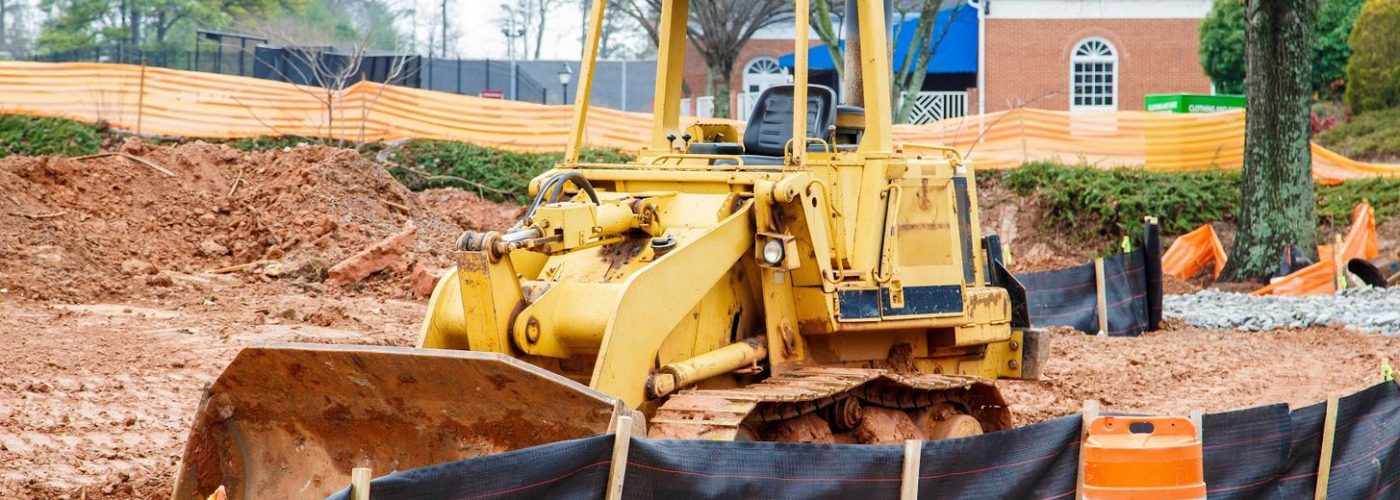Polypropylene or PP fabric is a type of textile that’s said to have many uses in various industries worldwide. It’s created through the production of specific oil and gasses. Then, they’re woven into fabrics ready for use.
Without undergoing prior chemical treatments, untreated PP fabric can be both bleached and cleaned; more processes may be done for further refining the product. The fabric is also known for its strength and utility, hence, many in the construction industry prize it for its benefits. The following points pertain to how different construction companies are using the material for a variety of purposes.
1. Rubble Mound Creation
Polypropylene fabrics are used in geotechnical engineering, a branch of engineering that involves the earth, materials related to the soil, and their behavior when used in construction. Coastal drilling and mining are just some of the activities that fall under the said category. PP’s also known as a geotextile or a special type of fabric favored for its geosynthetic feature and superior filtering capabilities.
Woven polypropylene fabric suppliers can create tear-resistant, mildew-resistant, high-strength, and lightweight materials that can withstand stretching and shrinking. The fabric prevents the mixing or transferring of delicate material like soil and sand with rocks or gravel.
It’s advisable that the material itself, however, needs to be protected by small stones that help prevent damage from rocks and blocks. Polypropylene is sometimes mixed with other similar geotextiles such as polyamide and polyethylene to enhance its usefulness and serve more specific tasks.
The synthetic fabric is used at beaches wherein it replaces rocks in locations that lack quarries. They can also be used as primary materials for the construction of rubble mound breakwaters to prevent the impact of ocean waves in coastal erosions and the transportation of sediments.
2. Flood Control
Locations that are constantly battling extremely wet weather conditions can use sandbags to protect different establishments. Polypropylene fabrics can be turned into sandbags. However, they’re not to be confused with earthbags for the two are different from each other. Sandbags are believed to be helpful flood control solution examples to prevent the flow of water as much as possible.
You can place sandbags in front of entrances and indoor water drainages such as the restroom and laundry room in your home. Sandbags are especially useful when the structure is made of fibro-sheeting or wood materials.
It’s important to note that this type of bag must only be filled with sand and not with clay, soil, or gravel as they’ll not hold water. They can go as heavy as 20kg and must be laid on top of a plastic sheet like you would with bricks where the unfilled part of a sandbag is topped with the filled end of another.
3. Fences And Screens
Polypropylene is one of the most widely used plastic materials in the world. It’s also used as a means to secure construction sites by keeping unauthorized persons out. Construction locations can be dangerous, and the use of polypropylene fences or screens is a safe and temporary alternative to other types of blockers a construction manager may use.
They’re economical and don’t cause harm to both motorists and pedestrians. Constructions sites also use them for aesthetic reasons as they can help block out the unsightly environment of the site from onlookers and passersby.
PP fabrics are regarded as a great material for construction fences because they’re resistant to the seasons and changing daily weather conditions. Their heat-enduring features prevent them from chipping or flaking that makes the covers long-lasting. In addition, they contain pigments and fillers that block out UV rays or ultraviolet radiation to protect both workers and the construction from possible damage.
4. Silt Fences For Erosion Control
Polypropylene silt-films are temporary shields used in construction sites to help prevent ground sediments from breaking or falling apart. It’s an essential tool for areas near bodies of water as it prevents the contaminated soil from eventually seeping into the water.
PP’s a durable material that’ll last up to six months with good care. They also make great temporary solutions to fencing because they’re easy to remove and can’t have a lasting effect on the environment.
Silt fencing can be a construction of wood and geotextiles like polypropylene material. They’re also resistant to water as it’s believed that they can withstand the pressures brought upon by a cubic foot of water.
5. Road And Railway Construction
Geotextiles like polypropylene fabrics, also called geotechnical materials mixed with other plastics, are also used to construct roadways and railways that make travel easier and faster. These unique types of fabrics are utilized to stabilize substrates or underlying layers of substances such as soft or uneven terrain underneath a construction feature.
In road construction, geosynthetic fabrics are laid out over muddy and unstable soil. Heavy machinery then spread out a subbase layer of rock or gravel on top. The plastic fabric helps prevent the subgrade material from sinking into the muddy ground. The area then becomes leveled and lowers the need for more maintenance work in the long run.
PP fabric is also placed between a layer of substrate underneath. A ballast layer is set on top to maintain structural integrity under the tracks. Railways tend to degrade over time because of subgrade cohesion. Geotextiles make it easier to save on labor costs because it puts a long gap between the maintenance periods of rail tracks.
Polypropylene combination fabrics can help prevent the subgrade underneath from pumping when trains travel on the tracks. The reinforcement barrier can help strengthen the layered elements to make them safer and sturdier throughout the years.
6. Earthbag Construction
Polypropylene fabrics can be made into earthbags that are used for home construction. They’re economical alternatives to conventional blocks and bricks but are also durable and holds well against water damage and rotting. They can be eco-friendly too as some earthbags are mixed with portions of clay and burlap or hemp. Some earthbags also come with UV protection.
No energy expenditure comes with transportation nor compacting earthbag fillers like soil. And while they’ll last a long time, the erosion will cause no serious harm to the surrounding environment. All of these consequently make PP material useful for construction.
Earthbags, unlike regular cement blocks or bricks, can conform or bent into curvature. It allows builders to be more creative with shaping homes. Because earthbags are filled with earth and other organic material, it’s said to be easily malleable. The exteriors can be covered with lime or cement-based stucco for added structural integrity.
Conclusion
Polypropylene fabric or simply called PPs is made of long-lasting material primarily used as a container or a barrier to help with construction. PP fabrics are made to withstand specific conditions to remain as they are for a long time. The applications of this synthetic fabric make it a versatile material that homes and players in the construction industry can use.






